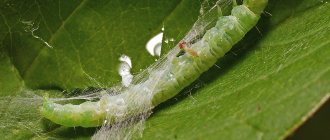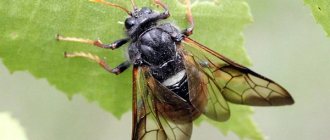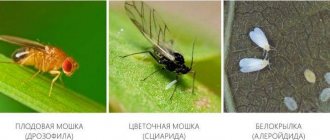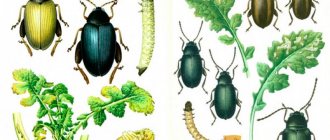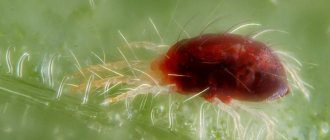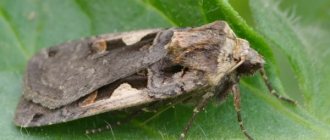Signs of gooseberry moth damage
The presence of the moth on gooseberries can be detected by examining the bush and berries.
How to recognize a pest
The presence of an insect is detected by the following signs:
- the appearance of cobwebs on the plant;
- the formation of small holes on the berries through which thin threads of cobwebs pass, gradually entangling several fruits into a ball at once;
- coloring of berries ahead of schedule;
- rotting, drying out and falling of fruits.
If you crush a intact berry from a cobweb-covered berry, inside, most likely, there will be a bright green caterpillar up to 1.5 cm long with a black head and ring-like spots - this is exactly what this pest looks like.
Attention! A characteristic sign of gooseberry damage by wax moths: its larvae (caterpillars) feed first on the flowers, then on the pulp of the berries and seeds, while the peel remains intact.
Damage caused
In the absence of timely measures to combat wax moths, its larvae will soon be enveloped in cobwebs and spoil most of the fruits (from 50 to 90%), or even completely deprive the gardener of the entire harvest.
The caterpillars that are not destroyed will overwinter in the soil in the form of pupae, from which butterflies will emerge in the spring and lay eggs first in flower buds and then on the ovary, from where the larvae will crawl out again and devour the flowers, pulp and seeds.
Reference. The damage from one moth caterpillar is the loss of 6-7 large gooseberries.
Life cycle of a pest
Gooseberry moth pupae overwinter in the upper layers or in cracks of the soil at a depth of 5-7 cm under gooseberry or currant bushes in cocoons made of cobwebs. In the spring, during the period of bud formation on berry bushes and the beginning of flowering, a massive emergence of the gooseberry moth occurs, which lasts for a whole month. Females begin to lay tiny, oval-shaped, white eggs in flowers, buds and even on the ovary. The clutch of one adult individual reaches 200 pieces. Egg maturation lasts approximately one week. The hatched caterpillars, up to three millimeters long, are white-yellow in color. Only one individual remains in each ovary, the rest move to other flowers.
The voracious caterpillars of the gooseberry moth begin to destroy seeds and juicy berries, entangling them in a web. One pest can eat about fifteen currants or from five to seven gooseberries. Adult moth caterpillars are green in color and have a black head. Their length can vary from 8 to 14 mm, and there are round black spots on the sides. The gooseberry moth in the photos presented on the site will allow you to get acquainted with all stages of insect development.
During the season, only one generation undergoes complete development. The length of time the moth stays in the caterpillar stage before pupation depends largely on weather conditions and the type of food. On gooseberries, the individual develops more intensively. On black currants, this period can last a week and a half longer and is approximately a month. Before pupation, the gooseberry caterpillar descends to the ground on a cobweb and penetrates no more than five centimeters into it. This is where the change in her state occurs. Pupae are arranged in small groups of 5-7 pieces.
The gooseberry moth causes enormous damage to currant and gooseberry bushes. Bushes entangled in cobwebs and damaged, browned berries have an unsightly appearance. Having carefully examined the fruits of gooseberries or currants, you can notice small holes on them, from which cobwebs stretch to neighboring berries. If measures are not taken in time and the fight against the pest is not started, the damage caused can take on catastrophic proportions.
Causes
Reasons for the appearance of moth on gooseberries:
- the presence of a pest on currant or raspberry bushes growing nearby;
- dense plantings and irregular pruning of branches, which leads to a lack of lighting and air;
- lack of proper care of the garden plot (cleaning up fallen leaves, fruits and other plant debris);
- non-compliance with the rules of agricultural technology (timely loosening and digging of the soil, mulching);
- neglect of preventive treatment measures to prevent plant damage.
Fighting gooseberry moth
Of course, when you find a moth on currant or gooseberry bushes, you will be interested in how you can effectively fight it to save your harvest.
There are several common methods, but it is best to perform timely prevention.
Prevention
Preventive measures to combat the described pest mainly consist of timely mechanical collection of damaged berries and ovaries, on which traces of the moth or codling moth are clearly visible.
By this action you will protect the rest of the harvest from their persistent attention. All collected pests are usually destroyed with boiling water.
In addition, make it a rule to regularly inspect other plants adjacent to currants or gooseberries, since the same raspberries can become a source of moth.
And of course, you should not forget about the agricultural technology of growing plants, because being weakened, the bushes are more susceptible to attacks by pests.
Timely pruning of shoots will also help, since thickening of plantings only attracts pests. The bushes should be well lit and ventilated. And with the arrival of autumn, do not forget to remove all fallen leaves from under the bushes.
Agrotechnical techniques
In practice, it has been repeatedly proven that the most effective method of combating the gooseberry moth is digging up the soil around the bush. Despite the fact that this is a rather labor-intensive process, hilling each bush with 10-15 cm of soil at its base will protect the fruits from the appearance of butterflies. They simply will not be able to overcome such a layer of earth to get to the surface. However, do not forget that it is better to take soil from row spacing and from a depth of at least 5 cm, where there are definitely no pupae. The ground under the bushes can be hilled up with compost or peat (up to 8-10 cm layer). After the end of the flowering period, such mulch should be removed.
Ways to get rid of moth on gooseberries
To combat the moth, gardeners use both traditional and chemical and other methods.
Chemicals
The use of chemicals, although toxic, is still the most effective method to help get rid of wax moths and their larvae.
The most effective insecticidal agents from which solutions for spraying plants are prepared, following the attached instructions:
- the drug "Iskra M" is used in the evening, when wax moths are active, 1 tablet is dissolved in 1 tbsp. water and bring the total volume to 10 l;
- "Aktellik" (6 ml dissolved in 6 liters of water);
- “Fitoverm” (1.5 ml per 1 liter of water);
- "Fufanon" (0.2% solution);
- “Kinmiks” (0.05% solution) has a paralytic effect on the insect body both in the butterfly and larval stages, leading to the death of the pest a few days after treatment;
- “Karate” is used to exterminate the pest at all stages of its mobile development.
Plants are treated with toxic chemicals no later than a month before harvest.
Traditional methods
Folk remedies for pest control include weekly spraying of the bush with infusions prepared on the basis of plant components. The procedure is carried out 3 to 4 times.
Mustard infusion:
- 100 g of mustard powder is dissolved in 10 liters of water.
- Keep at room temperature for 2 days.
- Strain and add 2 more parts of water to 1 part of the resulting infusion.
From tomato tops:
- 1 kg of tops is poured with a bucket of water.
- Insist for 1 day.
- Filtered.
Zolny:
- Sift 1.5 kg of wood ash.
- Add 5 liters of water.
- Keep for 2 days at room temperature.
- Strain.
On chamomile:
- 100 g of dried flowers are poured into 10 liters of hot water.
- They insist for 2 days.
- The bushes are sprayed 4 days after the flowers have fully opened.
On tobacco:
- 400 g of tobacco dust (or shag) is poured into a bucket of water and left for 48 hours.
- Add another 10 liters of water.
- Spray once every 7 days during flowering.
With pine extract:
- Pine or spruce needles are poured with hot water (at the rate of 2 liters per 200 g).
- Keep covered in a warm place for 7 days, shaking once a day.
- Strain and dilute with water (1:10).
Wormwood decoction:
- Half a bucket of blooming wormwood is poured with a bucket of water.
- Leave for a day, then boil for half an hour.
- Cool and filter.
- Dilute with water in a 1:1 ratio.
Traditional methods of combating moth also include treating gooseberries and soil with a 12% aqueous solution of dust soap. If a week after the procedure you scatter about 50 g of dust powder under the bushes, the effectiveness of this treatment will increase significantly.
Another interesting folk method of eliminating a pest:
- A newly blossoming elderberry branch is cut off.
- Place it in the middle of a gooseberry bush to repel caterpillars with an unpleasant odor.
Agrotechnical techniques
Agrotechnical rules:
- When planting bushes, make sure to provide the gooseberries with a sufficient amount of light and air, leaving a distance between plants of at least 1 m.
- Carry out regular pruning of branches.
- Planting mint, tomatoes and elderberry bushes around the crop will act as a deterrent to the pest.
- After harvesting the fruits, the garden plot is thoroughly cleaned of all plant residues, burning them outside the garden.
- To destroy pupae that lie in the upper layers of the earth for the winter, the soil at the base of the bushes is dug up.
- To prevent butterflies from flying out of the cocoons remaining in the soil in the spring, before the onset of the first frost, the gooseberries are hilled to a height of 10-15 cm.
Mulching the soil around the bushes with compost or peat to a depth of 3-4 cm is also used to combat the moth. In the fall, after the leaves fall, it is enough to pour 2-3 buckets of mulch into the middle of the bush so that the pupae are neutralized.
Mechanical methods
Mechanical methods of combating moth:
- Spoiled and cobwebbed berries and leaves are manually collected from the bush into a separate container, and then doused with boiling water or burned.
- Special light catchers are made from yellow or orange cardboard coated with glue that takes a long time to dry, to which butterflies stick.
- Place traps with fermented sap near the bushes.
- Cover the soil around the bush with roofing felt or roofing felt to attract ground beetles that destroy the moth.
- Gooseberry moth
- Gooseberry moth
- Yellow gooseberry sawfly
- Gooseberry aphid
- glass
- Zlatka
Protecting gooseberries from pests
Obtaining high yields of gooseberries and prolonging their life depends on preventive measures and on the timely implementation of special measures to eliminate pests and diseases.
The main measures to prevent damage to gooseberries by pests and diseases are: keeping the soil loose and free from weeds, timely removal of frostbitten, old, dry and broken branches and burning them, applying sufficient amounts of organic and mineral fertilizers. All these measures improve the general condition of plants and increase their stability. However, warning alone is not enough to protect gooseberries. It is also necessary to apply special measures to eliminate pests and diseases.
Gooseberry moth
This is the most dangerous pest of gooseberries, black and red currants. With mass distribution and insufficient control measures, it can destroy the crop by 60–70%.
Rice. 8.
Gooseberry moth:
1 - butterfly, 2 - caterpillar, 3 - damaged berries
The gooseberry moth is a small gray butterfly. It overwinters in the pupal stage under gooseberry or currant bushes at a depth of up to 5 cm. In the spring, at an average daily temperature of 11–13 °C, the flight of butterflies begins.
Usually its beginning coincides with the budding or blooming of flowers. In a friendly and warm spring, flight lasts several days, and in a cold spring – up to two weeks.
3-4 days after mating, the butterflies lay one egg inside the flower, and after late emergence - on the leaves and young ovaries. In total, each butterfly lays 100–200 white eggs. Gradually, as they develop, they turn pink. The caterpillars hatch 5–8 days after laying. Without leaving the flower, they gnaw at the pistil and penetrate into the ovary. They feed mainly on seeds. Having destroyed the seeds in one berry, the caterpillar moves to the second, then to the third, and so on - up to 6 berries (depending on the size of the latter). Damaged gooseberries rot. Usually they are slightly entangled in cobwebs.
At the end of June or beginning of July, depending on the timing of departure, the caterpillars of the moth descend to the ground, crawl under lumps of soil or manure, weave a cobwebby greenish-gray cocoon and soon turn into dark brown pupae.
Control measures.
In the fall, they dig up the soil near the bushes, completely covering the layer. Some of the pupae fall to great depths and die there.
Early in the spring, before the butterflies emerge, gooseberry bushes are covered with soil in a layer of up to 12 cm, with a radius of up to 70 cm. The soil for hilling is taken from the row spacing. The moth cannot crawl through such a layer and dies. Two weeks after flowering, the soil is raked away from the bushes.
When the moth spreads massively, the soil under the bushes, after spring loosening, before the appearance of buds, is sprinkled with hexachlorane at the rate of 70–100 g per bush. Butterflies crawl through the poisoned ground and die. Instead of dusting with hexachlorane, you can spray twice with a 0.3% solution of nicotine sulfate or anabasine sulfate with 0.4% soap.
The first treatment with the indicated pesticides is done 4-5 days after the first flowers begin to open, the second - ten days after the first. After flowering, pollination with 5.5% DDT dust works well.
Gooseberry moth
Damages gooseberries, currants, and sometimes plums.
The moth is a large butterfly; wingspan - up to 45 mm. The wings are yellow-white with large black spots. The caterpillars are white with black spots on the back and yellow stripes on the sides.
The caterpillar overwinters in fallen leaves under bushes. In the spring, the caterpillars hatch and begin to eat gooseberry leaves. At the end of development, they entwine several leaves with a web and pupate among them. At the end of July or in August, the flight of butterflies is observed. They lay eggs in clusters on the underside of leaves. Each female can lay up to 300 eggs.
Rice. 9.
Gooseberry moth:
1 - butterfly, 2 - caterpillar, 3 - testicles
Control measures.
Collect and burn fallen leaves and debris. The bushes are sprayed with 0.15% Paris greens with double the amount of lime (10 g of Paris greens and 30 g of lime per 10 liters of water) or 0.3% calcium arsenous.
Yellow gooseberry sawfly
Gooseberries are damaged by sawfly larvae of several species. The greatest damage is caused by the yellow and pale-legged sawflies. The development cycle and the nature of the damage caused are similar.
In its adult state, the gooseberry sawfly looks like a yellow fly. The larvae are green with a black head and black warts on the body. Females emerge in the spring and lay eggs (up to 60 eggs each) along the veins of the underside of young leaves. After 10–12 days, caterpillars emerge from the eggs and eat up all the pulp of the leaves, leaving only the veins. The larvae feed for 20–25 days, then go into the soil and pupate there.
In July, butterflies of the second, more numerous generation emerge from the pupae and lay eggs. In years favorable for sawfly development, there may be a third generation. The larvae overwinter in dense cobweb cocoons in the soil, under bushes. In spring they pupate.
The second generation larvae cause especially great harm. When multiplying en masse, they can quickly destroy all the gooseberry leaves and thus destroy the harvest of both the current and next year. The fact is that in bushes damaged by the sawfly, normal shoot growth does not form and fruit buds do not form. In addition, the resistance of weakened plants to frost decreases.
Rice. 10.
Yellow gooseberry sawfly:
1 - larva, 2 - pupa, 3 - adult sawfly, 4 - eggs on the leaf, 5 - damage
. Control measures.
The first - small - generation should be destroyed. To do this, it is necessary to monitor the bushes and, when a sawfly appears, pollinate them with DDT. You can also spray with a 0.3% solution of calcium arsenic acid with lime or a 0.2% solution of Parisian green - also with lime.
In the fall, and at the time when the first generation larvae go to earth, they dig up the soil under the bushes.
Gooseberry aphid
Insects settle on young shoots and leaves, sucking the juice from them. The leaves curl, the shoots become bent, become depleted, stop growing, and if severely damaged, die.
The laid eggs overwinter on young shoots. In early spring, larvae emerge from the testicles, which after several molts turn into wingless females. They give birth to female larvae without fertilization. In June, winged females appear, fly to other bushes and form new colonies.
By autumn, males appear. After mating, females lay overwintering eggs.
Aphids reproduce very quickly: in just a few days they cover the entire bush.
Control measures.
To destroy overwintered eggs, in early spring, before the buds open, the bushes are sprayed with 6% carbolenum or 4–6% mineral oil emulsion. During the period of bud break and hatching of larvae, spraying with a 0.2% solution of anabasine sulfate or a 0.15% solution of nicotine sulfate mixed with 0.4% soap (20 g anabasine sulfate or 15 g nicotine sulfate) is used and 40 g of soap per 10 liters of water). When aphids appear in summer, spraying with anabasine sulfate or nicotine sulfate with soap is repeated.
glass
This is a butterfly with transparent wings with a span of up to 2.5 cm. In the spring, after the gooseberries bloom, the glasswing lays eggs on the gooseberry shoots, near the buds. The hatched caterpillars - white, with a brown head and 8 pairs of legs - penetrate into the buds, and through them into the shoot, to the core. They make passages, going down to the base of the shoot.
Damaged shoots first wither and then die.
Rice. eleven.
Glassweed caterpillar in the middle of a shoot
Caterpillars overwinter inside damaged stems. In the spring they pupate (in the stems), and in May the butterflies begin to fly.
Control measures.
Before the butterflies begin to fly, shoots are cut out and damaged ones are burned.
After flowering, the bushes are pollinated with DDT dust or sprayed with a 2% DDT suspension. Pollination or spraying is repeated after 7–10 days, since the butterflies do not fly out at the same time.
Zlatka
Zlatka is a green beetle. The development cycle and nature of the damage resembles glass glass.
The larvae overwinter inside damaged shoots. In the spring they pupate, and in July the beetles fly out and feed on the young gooseberry leaves. After 7–10 days, the beetles lay eggs on young gooseberry shoots and cover them on top with mucous shields. Legless larvae emerge from the testicles and bite into the shoots, making passages (like glass caterpillars). The larvae feed on the pith and wood of the shoots, gradually descending to the base of the branch. Damaged plants grow slowly, their berries become smaller, and then the shoots die.
Control measures.
In early spring, damaged branches are cut out and destroyed.
At the beginning of the beetles' flight, the plants are pollinated with 0.15–0.2% Parisian greens with double the amount of lime. You can also spray with DDT or spray with a 2-3% suspension.
Table of contents
Features of pest control in different periods
Before flowering begins, in May, when buds begin to form and butterflies begin to fly, chemicals are recommended for use to combat wax moths:
- "Senpai";
- "Kinmiks";
- "Fufanon";
- "Iskra M"
- "Karbofos";
- "Gardona";
- "Etaphos";
- "Actellik" and other insecticides.
Among the folk remedies at this time, the use of pine infusion is effective.
During the flowering period, treat the plant with tobacco infusion once a week, and then, during egg laying, use:
- “Lepidotsid” (30 g per 10 liters of water);
- “Bitoxibacillin” (100 g per 10 liters of water);
- "Gomelin";
- "Agravertine";
- "Entobacterin" and other biological products;
- mustard infusion.
During the period of fruit ripening the following is used:
- "Fitoverm";
- "Bitoxibacillin";
- folk remedies.
The use of safe drugs (Bitoxibacillin and others) is permissible even 5 days before the start of harvest. The treatment is carried out once every 5-7 days, and the berries are thoroughly washed after using these products.
In the fall, after harvesting, when the dormant period begins, the bush is treated with pesticides, as well as:
- they dig up the soil around the plants so that the wax moth pupae appear on the surface and die during the winter cold;
- cover the tree trunk circles with black agrofilm or a layer of mulch about 4 cm thick so that the larvae cannot get out of the soil and get onto the bushes.
Fighting moth with folk remedies
Traditional methods will help protect currant bushes, many recipes of which consist of ingredients available in the arsenal of every gardener.
Folk remedies for fireworm
Traditional recipes (they can be used throughout the flowering period with an interval of at least 5-6 days):
- Chamomile. Two methods are used for processing:
a) Pharmaceutical chamomile. To prepare the treatment solution, you need to pour 50 g of flowers into 5 liters of boiling water and leave for two to three hours. After the solution has cooled, spray the currants with it; carry out the work a week after the first flowering.
b) Dalmatian chamomile powder. The product is used to dust the bushes; work should be carried out periodically every 5-6 days.
- Wood ash. Spraying procedures should be carried out during fruit ripening. Instructions for preparing the solution: 1/3 of a 10-liter bucket is filled with ash, the rest is filled with water and left for two to three days in a place without sunlight.
- Mustard. Mustard powder tincture is used during fruit ripening. To prepare the solution, you need to dilute 50 g of mustard powder and 5 liters of hot water, leave for two days, then spray the currants with a spray bottle.
- Coniferous concentrate. To prepare the product, you need to dilute 2 tablespoons per 10 liters of water; the plant is treated with the solution by spraying throughout the flowering period, at weekly intervals.
- Traps. In summer, it is recommended to place light traps near currants. To make them, you need to take bright yellow cardboard and apply glue to it. Such designs will get rid of a large number of adult individuals.
- Elder. To prepare the solution, you need to dilute 10 g of dried elderberry flowers in 1 liter of water and let it brew for two days. After the infusion, you need to strain and spray the currants with it.
Gooseberry varieties resistant to moth
Some gooseberry varieties are resistant to moth damage:
- The universal variety Krasnoslavyansky bears fruit with slightly pubescent large red berries, which have a pronounced pleasant aroma and high taste.
- Salute is one of the most productive varieties with dark red fruits, which, being quite ripe, remain on the branches for 2-3 weeks without falling off. The berries have an excellent taste, and there is practically no smell.
- Malachite belongs to the technical varieties of medium ripening period. Its berries are bright green in color, with thin transparent skin and delicate pulp.
- The high-yielding mid-early variety Cossack with spreading bushes and thorny branches produces medium-sized berries with a dark purple color and a dessert taste.
- The mid-late winter-hardy Chernomor is distinguished by its high yield and versatility of use. Its fruits are almost black, thin-skinned, and sweet.
Fighting gooseberry moth
Chemical treatment
Chemical exposure is an effective method, but unsafe. The effect of poison on fruits has not been fully studied; some gardeners are afraid to feed children berries from the bush after such treatment. The chemical can also get into the water, and birds will drink it and die. If you decide to use pesticides, do so before the bushes bloom. Control measures during this period:
- The soil under fruit bushes can be treated with hexachlorane. Butterflies will crawl on the poisoned soil and die.
- Nicotine sulfate and anabasine sulfate have the same effect; use only a weak solution.
- In case of mass infection, you can treat the soil with a solution of dust (12%); in addition, 7 days before the bush blooms, sprinkle 50 grams of dust on the soil.
- When the buds have already begun to form, Kinmiks, Iskra, and Gardona are recommended.
- And after the bush has bloomed - “Bitoxibacillin”, “Gomelin” or “Lepidotsid”. These are biological drugs that are considered natural methods.
Protect gooseberries from moth
Folk methods of fighting moth
- In the fall, dig up the soil under and around the bush.
- Hill up the bushes regularly, raising the soil by 10-15 cm, and take the soil as far as possible. The process is labor-intensive, but it's worth it.
- A simple and effective way to remove all moths in two years is to lay the base of the bush with roofing material. It must be laid tightly, in one layer, from the root to the end of the branch growth. It is best to apply the method in late autumn; in spring, insects simply will not crawl to the surface. The final victory over insects can be celebrated if the procedure is repeated the second year.
- A few days after flowering, spray the bush with infusion of shag, chamomile herb or onion. You can use yarrow, tansy grass or regular mustard. Repeat the treatment 3-4 times every other week. Recipe with mustard: 100 grams of dry mustard per bucket of water, let it brew for two days, strain and dilute by half.
- When the ovaries have formed, use a solution of soap and ash. 1 kilogram of ash per bucket of water. Let it brew for 7 days. Drain the liquid, add soap (it is needed so that the product sticks to the leaves) and treat the infected bush.
- Collect damaged, wilted fruits, as well as caterpillars and their nests from the web.
- Plant tomatoes and red elderberries close to the fruit bushes.
- Take 200 grams of spruce or pine needles, pour two liters of hot water. Let it brew for 7 days. Dilute 10 times before use.
- If you have a small area, install traps, for example, containers where fermented juice is poured. There are light traps and electric traps that can be purchased at the store.
- Provide the shrubs with good air circulation and adequate lighting.
- In early spring, before the snow has melted, water the bushes with hot water.
Preventive measures
Measures taken in advance will help prevent the appearance of wax moth larvae on gooseberry bushes:
- Keeping the garden area clean, timely cleaning and destruction of broken branches, fallen leaves and fruit residues.
- Hilling bushes in late autumn.
- Mulching the ground around the bush with peat or compost.
- Covering the soil adjacent to the bush with plastic film.
- Watering the bush with hot water at the very beginning of spring, when the snow has not yet melted.
- Placement of bird feeders in the garden.
Digging up the soil at the planting site, followed by treating its surface layer with hexachlorane or a solution of nicotine or anabasine sulfate.
Agrotechnical methods of combating moth
Every gardener, having noticed the symptoms of the presence of a pest, looks for ways to destroy it, among which agrotechnical measures have become popular.
Currant pests
Control methods and preventive techniques against moth:
- Deep digging. In the fall, you should dig up the soil around the bush; this will allow you to raise all the pupae to the surface of the earth, providing them with an unfavorable environment for development.
- Hilling. It is recommended to carry out work at the end of autumn. During hilling, raise the ground by 10-15 cm; this will not allow the butterflies to fly up after pupation. It is best to take the soil between the rows and at great depths, where there are definitely no pupae and butterflies. In the spring, after the bush has finished blooming, the soil needs to be loosened.
- Mulching the ground around the bushes with peat or compost to a depth of 10-15 cm. The principle of operation is the same as that of hilling, the method does not allow the butterflies to get out, most of the individuals die.
- Thinning bushes. With regular pruning, the space becomes freer and more light appears. This method is excellent for preventing the fight against moth.
- Cutting and disposal of branches. If a pest has already been spotted, it must be removed. The branches and bunches on which the butterfly is found are cut off and disposed of.
- Boiling water. You can destroy the pest by pouring boiling water on it.
Helpful Tips and Mistakes to Avoid
Experienced gardeners share tips for combating moth:
- To reliably protect gooseberries from wax moths, it is also worth treating neighboring plants (currants, raspberries) that are susceptible to damage by these insects.
- Since the life cycle of the pest is 40 days, and the insecticidal preparations used to destroy it last no more than 20 days, the procedure for spraying gooseberries with chemicals is carried out 2-3 times.
- For treatment with insecticides to be highly effective, an integrated approach is needed, including parallel control of pupae located in the soil. To do this, use systemic agents (“Confidor maxi”, “Aktaru” and others), diluting the drug in water (8 g per 10 l) and watering the soil around the roots with the solution.
- Using an adhesive, for example, grated and dissolved laundry soap in water, when spraying will help the active substances remain on the leaves of the plant for a long time and act more effectively.
It is better to avoid the use of insecticidal preparations (systemic and contact) at air temperatures above +25°C, since in the heat their phytotoxicity increases, which leads to a negative effect on the human body.
Brief description of the pest
Before you begin to destroy an insect, you should make sure that it is the currant that is harming the currant, and not diseases or other insects: spider mites, aphids,. A description and photo will help you recognize the pest.
Appearance
From the numerous family of moths, currants are occupied. In addition to red and black currant bushes, the insect is found on gooseberries, and occasionally in raspberries. Distributed in the middle and northern zone.
A white oval stripe on the front wings and brown blotches are a characteristic feature of the gooseberry moth butterfly
What does an adult butterfly look like:
- wingspan varies in the range of 2-3 cm;
- body length 15 mm;
- short thread-like antennae;
- the front wings are inconspicuous gray with a brown or dark tint;
- the hind wings are lighter in color and edged with dark fringe;
- a small head with a barely convex forehead is covered with scales that form a kind of cone.
The larvae are 16-legged caterpillars ranging from 8 to 14 mm in length. In newborn individuals, the color is pale yellow, green, which as they grow older acquires richness and gray shades. The head is black. Blurry ring-shaped spots can be seen on the sides.
The pupae are brown, 9 mm long, with 8 curved spines on the cremaster.
Developmental phases and reproduction
The fight against moth on currants will be much more effective if you know the nuances of insect development. Insects overwinter in the pupal stage in spider cocoons in the upper soil layers. The year of butterflies coincides with the beginning of budding of gooseberries and currants.
A week after emergence, adults begin mating. On currants, the moth lays eggs in flowers, occasionally under the lower part of young leaves. The female approaches the process with full responsibility and places the embryos one at a time. During its life, it is capable of giving birth to 200 individuals.
After 7-10 days, voracious caterpillars emerge from tiny white eggs, the size of which does not exceed 0.7 mm. They entwine young berries with a web, penetrate inside and eat away the pulp and seeds. The pestilence of the larvae lasts for almost a month. Having collected the required amount of nutrients, they go into the soil to pupate. One generation of offspring is possible per year.


